|
I saw that the Bridgehunters historical bridge website lists the bridge and has a good history, but doesn't have many pictures. Then I planned a day with good weather to visit it; I live just 10 miles from here.
This is the Tomorrow River Bridge of the Green Bay and Western Railroad.
The railroad became the Tomorrow River Trail. |
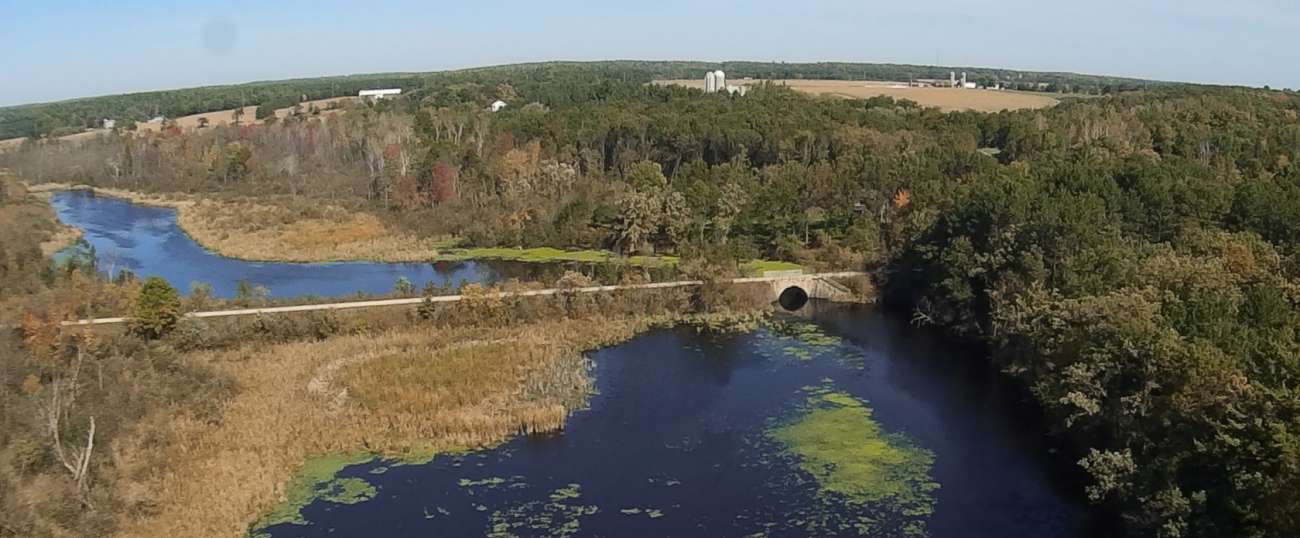
|
This is a kite aerial view looking east at the trail, and it starts to curve on the horizon as it dodges around the Scandinavian hills. |
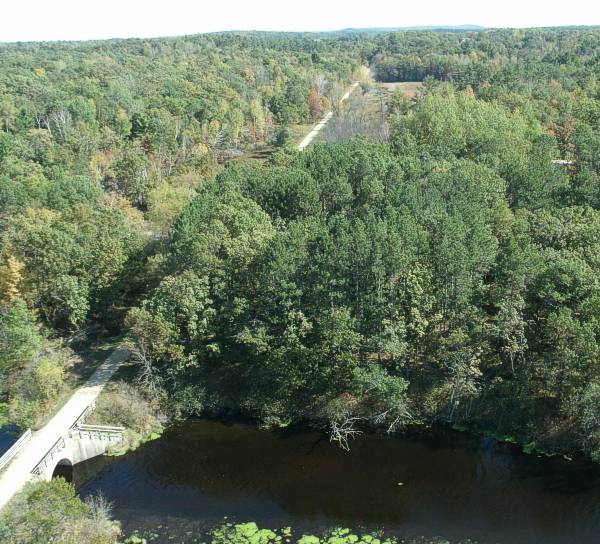
|
There are hikers on the trail, and a canoe on the river. You could launch from the adjacent Cate County Park, but that's a bit steep on the river bank. (I started from the Amherst boat landing a half mile south of here) |
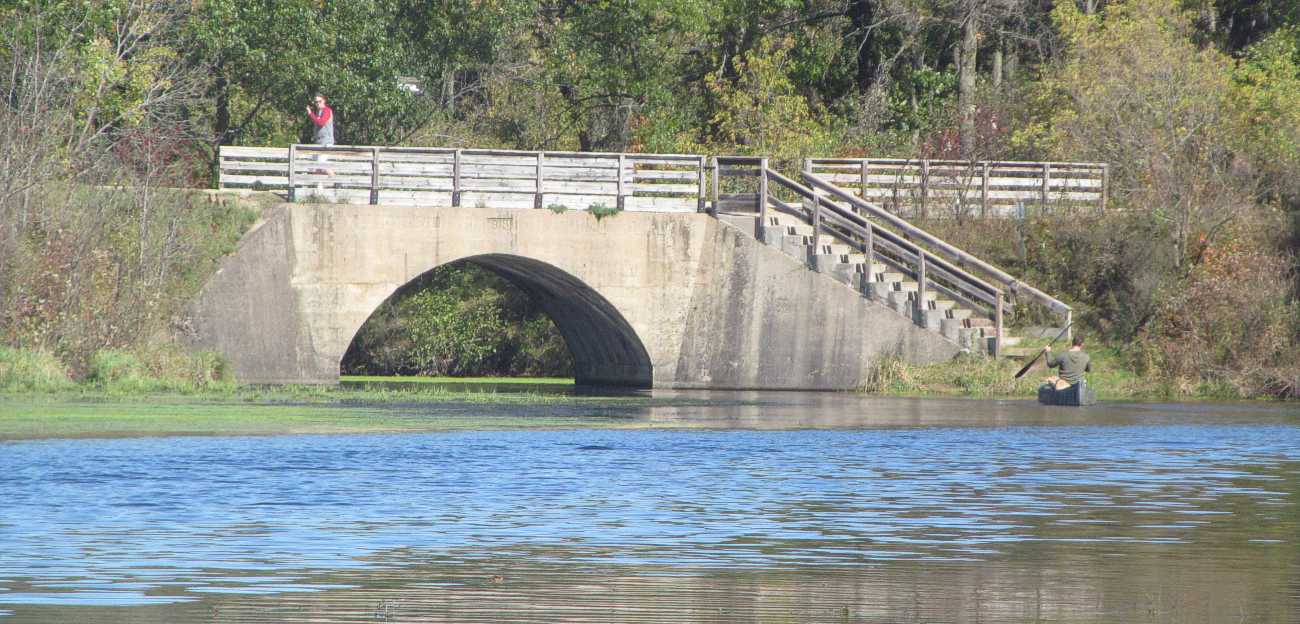
|
The steps have concrete that is a different color than the arch, so I guess they were added when this was converted from a rail bridge to a trail bridge. They get you to river level, but there isn't an obvious trail leading south from here. Go back up to the paved trail and go east a hundred feet and use that level trail to get into Cate County Park. |
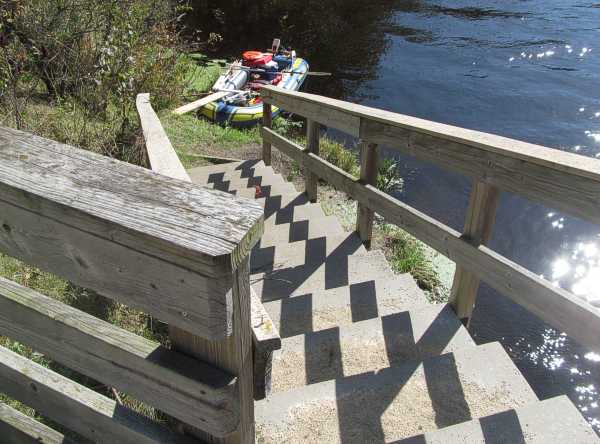
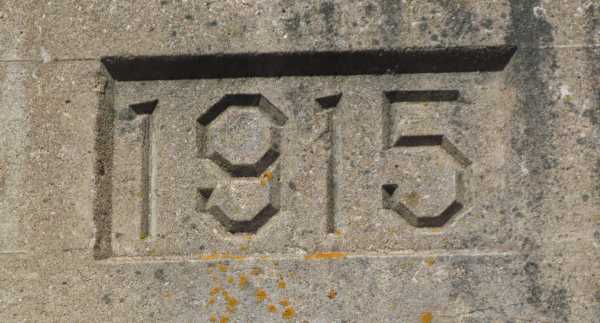 .
.
The 1915 date is cast near the top of the arch,
on the south side only.
| Looking west. Amherst Junction would be 2 miles west of here. |
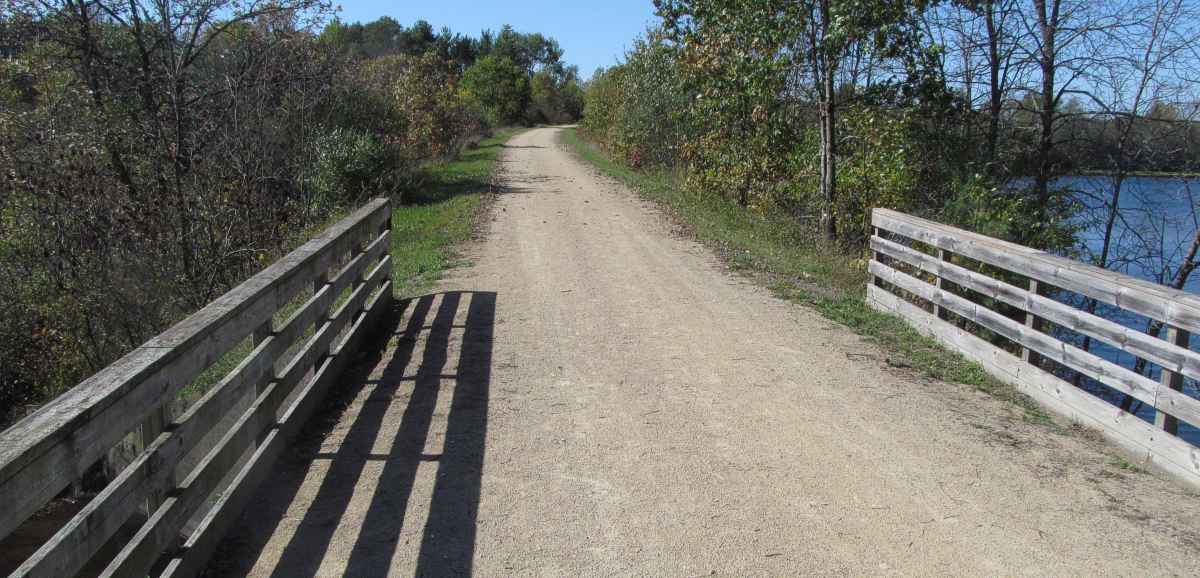
| Looking east. Cate County Park is on the right / south. |
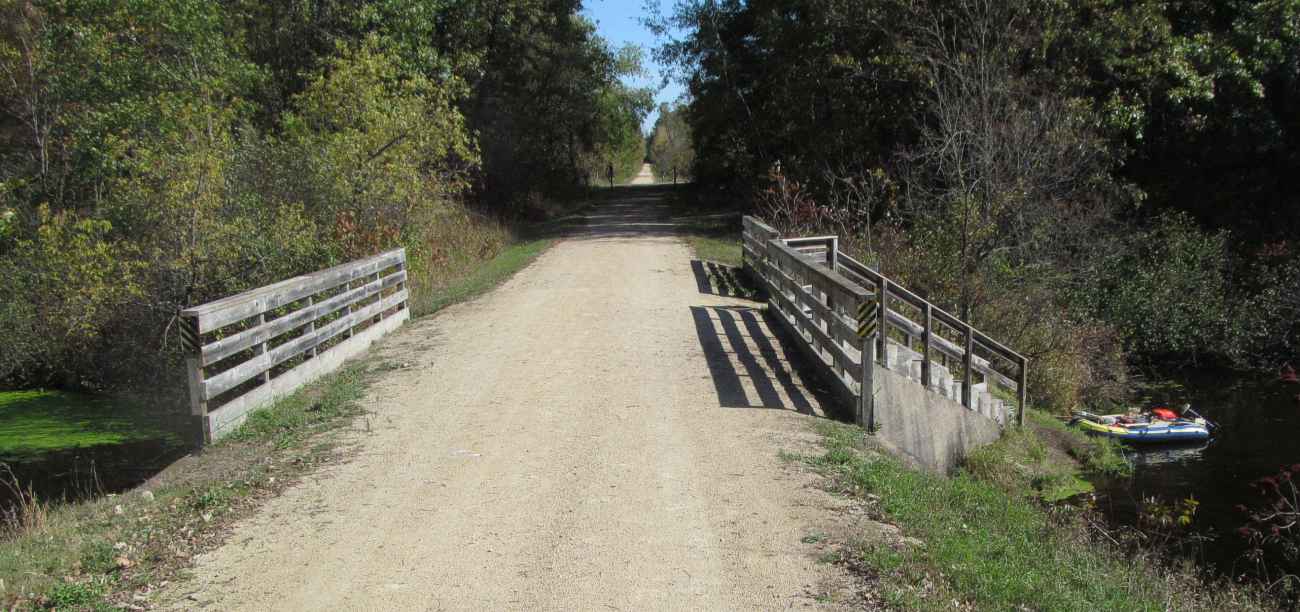
| Looking North |
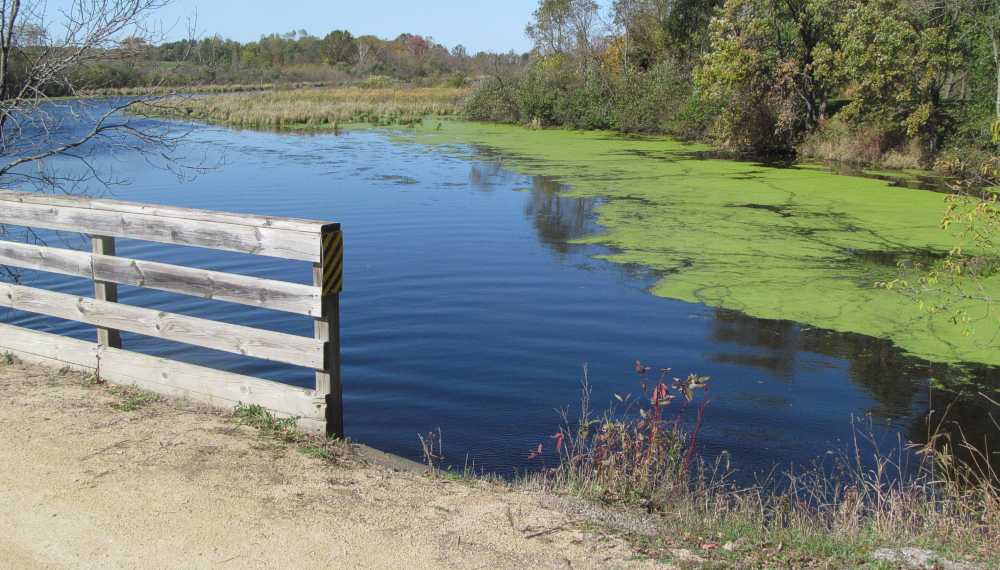
| The north side. |
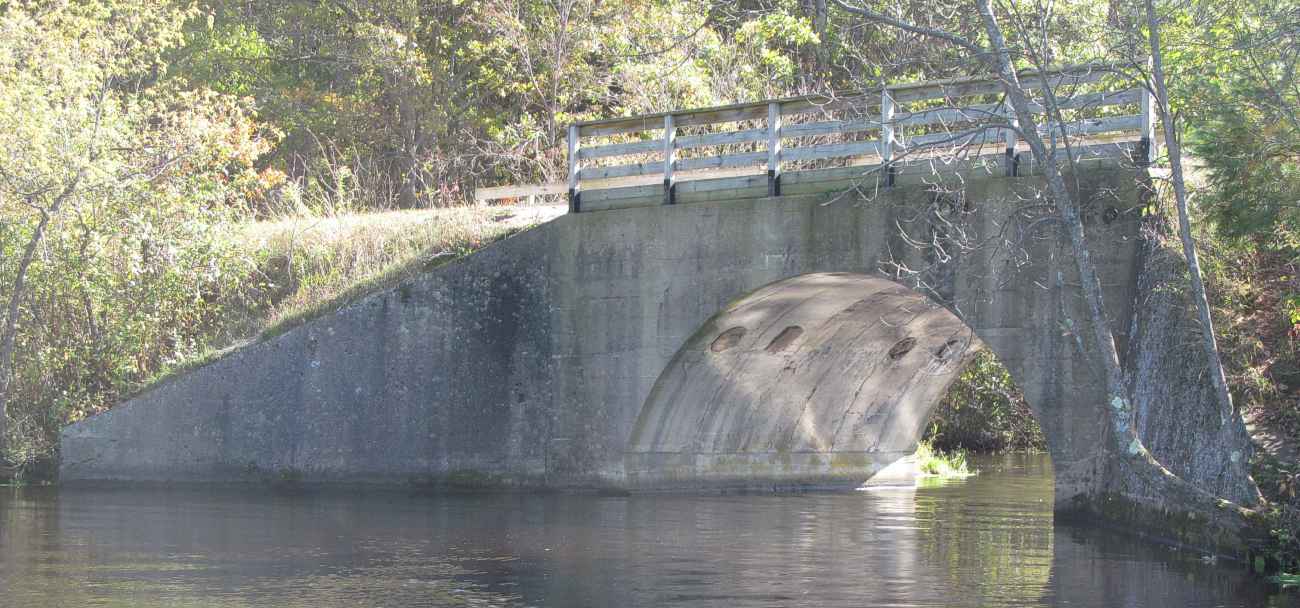
|
The arch has 4 filled holes on each side. I wondered if that was where the timber form work was set to build the arch support for the top half of the arch, before the big pour. But, the next day I thought better of it and now think thats the hole plugs after they removed the vertical piles of the wood trestle that could have been above this arch. The first crossing of this river would have been a wood trestle, that was easy to construct, and later replaced by this more permanent concrete arch bridge. The concrete construction materials could be hauled in by rail, the wooden form work set up, and the concrete poured, even around the wood pilings. Trains could still pass over every day. By the concrete colors, the pours appear to be in stages, probably foundation, lower and upper arch. After the concrete set and the wooden forms removed, gravel or fill would be dumped in up to the trestle caps, then the cap timbers removed and ballast fill added. Many of the trestle pilings that are further east and west of the arch are probably still buried there. |
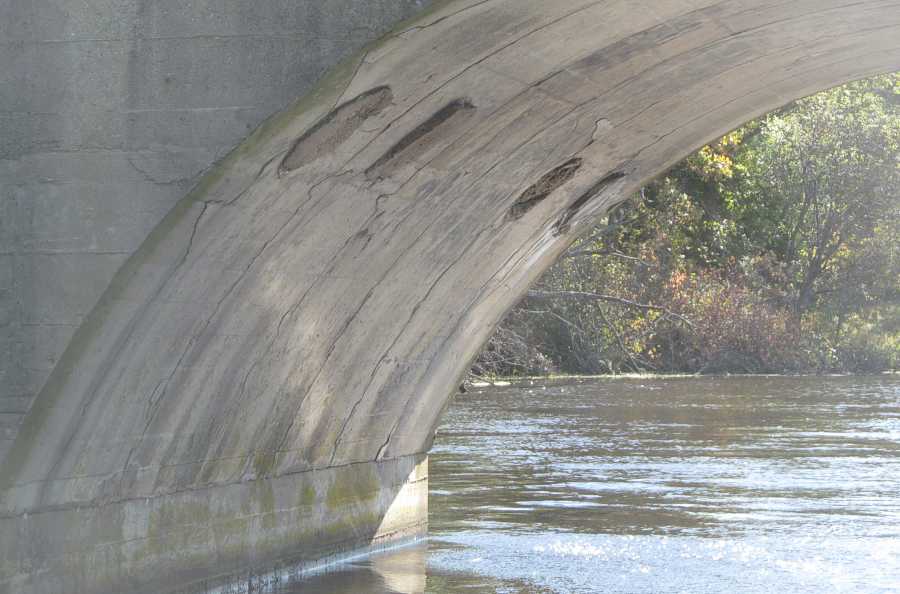
| Kayak coming through. |
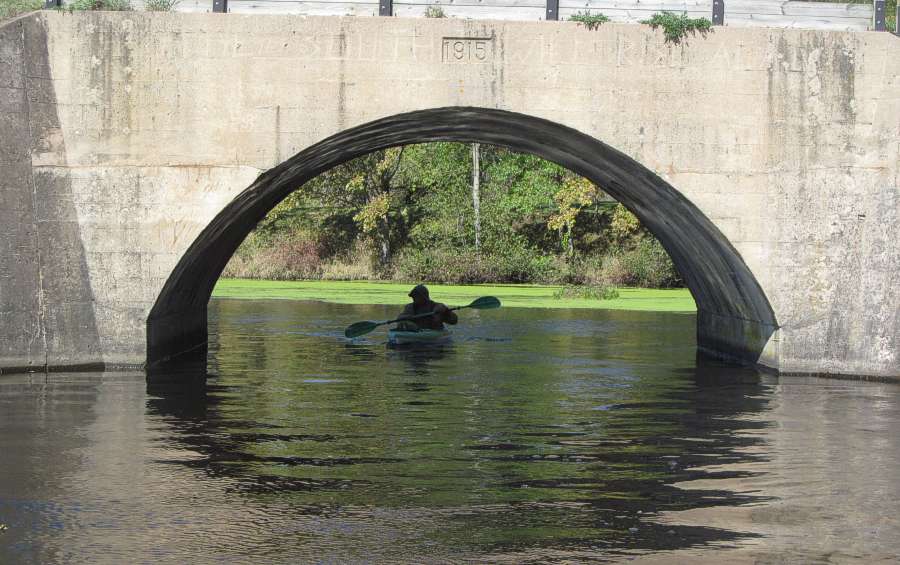
|
The bridge has Bridgehunter.com ID number BH 71494 and you can also find it by a search on their web site, use the name: Tomorrow River. |
Link to the Portage County website for the Tomorrow River Trail"
Link to the state DNR page, which gives a better description, DNR Tomorrow River Trail website
.
. . . . . to My Main Index Page on the TrainWeb site.
This page was filmed and wrote in October, 2019.